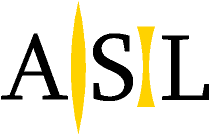This is a 750 mm (0.75 m) length of MakerSlide.
MakerSlide, the amazing open source linear bearing system designed by Bart Dring, is available to European builders thanks to the supporters of Harry Raley's Ulule campaign.
MakerSlide is an open-source linear bearing system that doubles as structural support. It is dimensionally compatible with several T-slot aluminium extrusion systems (it most closely resembles the Misumi HFS5 series). This makes it easy to integrate in any design. MakerSlide does the same job as the tried-and-true industrial system of V-groove bearings running on V-rails, at a fraction of the cost. It is a 20 mm by 40 mm T-slot profile with V-rails built-in, which makes it simpler than systems with V-rails bolted to a separate aluminium profile. An important advantage of V-groove systems, including MakerSlide, over other linear bearing systems, such as linear ball bearings on round rods, is that V-groove systems withstand torsion around all axes. This also simplifies machine design and lowers cost.
Three or four acetal (Delrin) V-wheels run on the V-rails of MakerSlide. One or two eccentric spacers or eccentric nuts adjust the distance between the V-wheels. Two further types of eccentric spacer are optimized for plastic carriages (e.g. 3D-printed carriages). For the standard acetal V-wheels, the distance between hole centers is 64.6 mm. The eccentric spacers offer about 1.4 mm of adjustment (0.7 mm either way). The fixed V-wheels require 5 mm (5.0–5.3 mm) holes; the eccentric spacers need 7.14 mm holes (9/32 inch). We offer the standard MakerSlide carriage plate, and a smaller version. A motor bracket can be used with NEMA14 and NEMA17 stepper motors in several configurations (see the camera slider assembly instructions for an example; a nearly identical part is used in Bart's ORD Bot in a different way). We carry several accessories for belt-driven MakerSlide systems: belt, belt pulleys, idler wheels, and belt anchors. MakerSlide motion can also be screw-driven, such as the Z axis of the Shapeoko and eShapeoko milling machines, or the Z axis of the ORD Bot 3D printer. Belt systems can be closed-loop (ORD Bot), or open-ended (Shapeoko, eShapeoko, camera slider).
Hardcoat anodized MakerSlide can be used with steel V-wheels. These are significantly more rigid and can bear more load than the acetal (Delrin) V-wheels. However, our steel V-wheels are smaller than the acetal V-wheels, so please read their description for hole positioning and use the appropriate carriages.
MakerSlide can be attached to other components of the machine in several ways, most notably by using insertion nuts in the T-slots (available in M3, M4 and M5), and by tapping the end holes and using M5 screws. A spiral flute tap is recommended for tapping MakerSlide. Brackets and a wide variety of compatible accessories are available from, for example, Misumi (contact us if you'd like us to carry a particular item).
MakerSlide can be cut by a variety of means:
- hacksaw (with or without a mitre box);
- chop saw or mitre saw, even one with an ordinary tungsten-carbide tipped blade for wood -- preferrably a cross-cut blade, but any blade will do if you go slowly. If using an abrasive cutting blade, check that it has been designed for cutting aluminium.
- band saw;
- any of the above, followed by facing in a milling machine.
While MakerSlide can be cut, filed and sanded safely, please remember that grinding aluminium alloys with a stone or disk designed for ferrous metals is dangerous. It can cause the grinding stone or disk to disintegrate, which can have disastrous consequences.
Lengths available:
- 250 mm
- 500 mm
- 750 mm
- 1000 mm
- 1500 mm
- 2000 mm
- Custom length: see here.
We can supply custom lengths in larger quantities without the extra charge. Please contact us.

